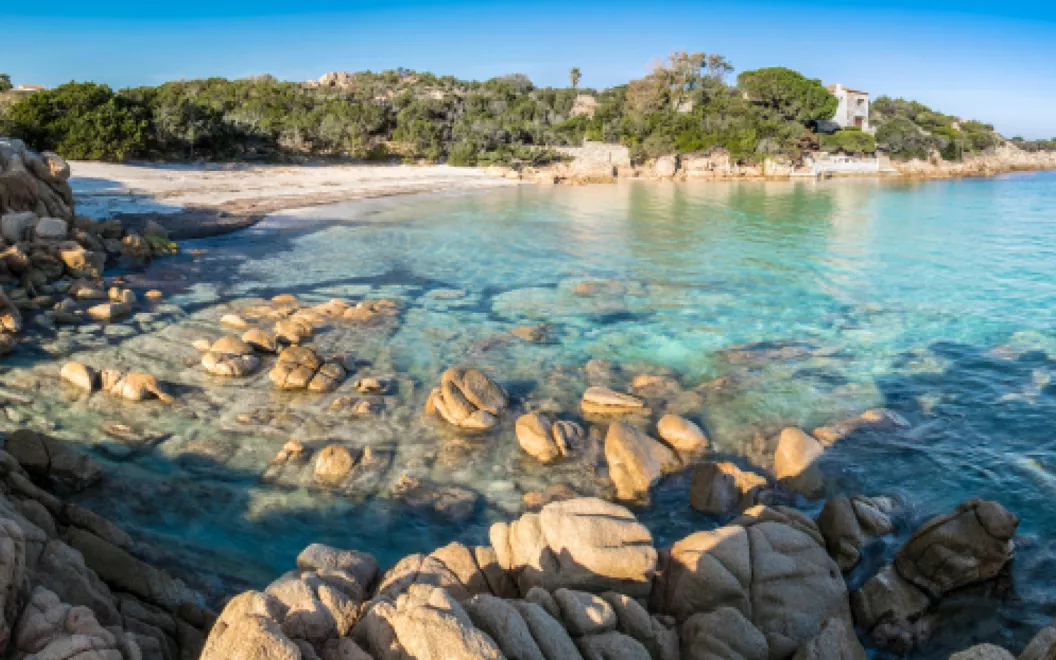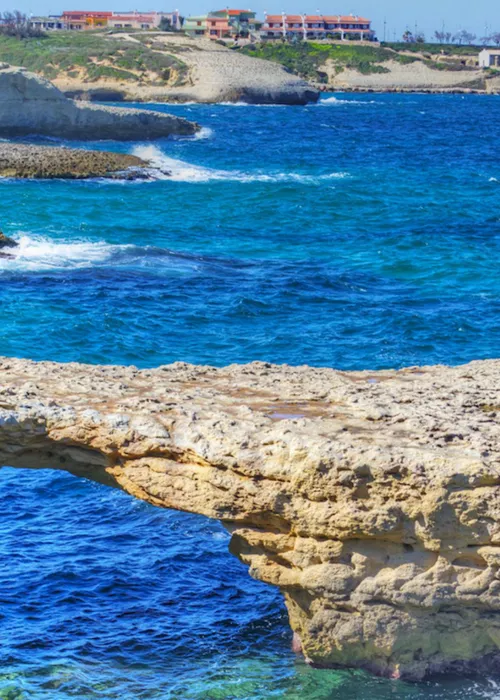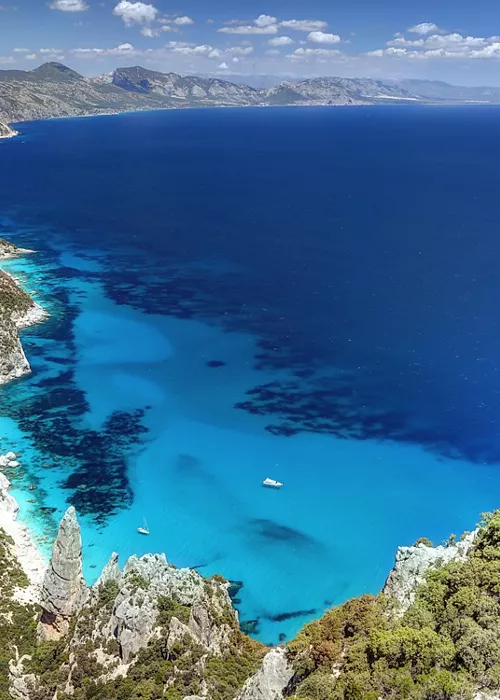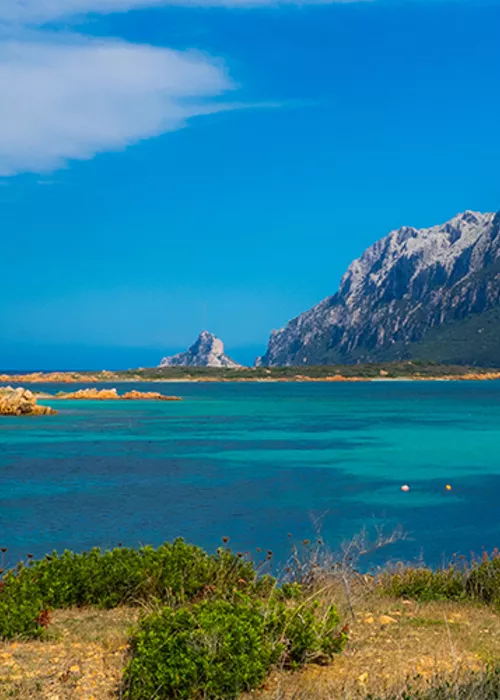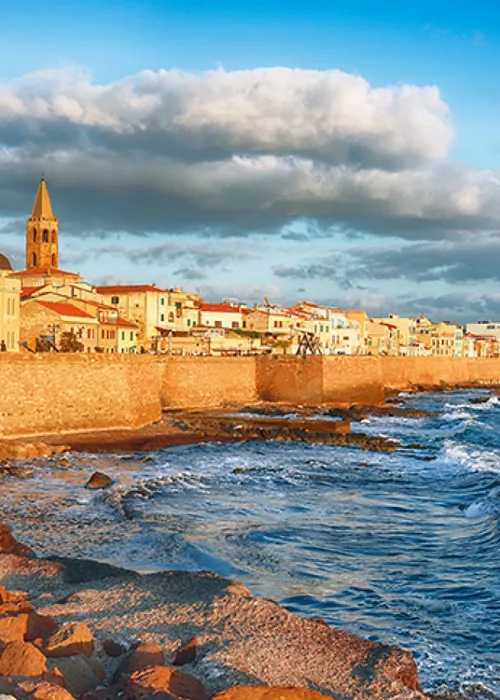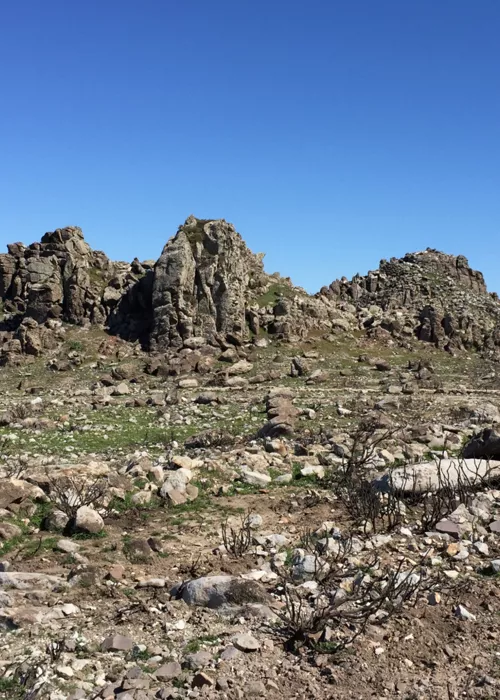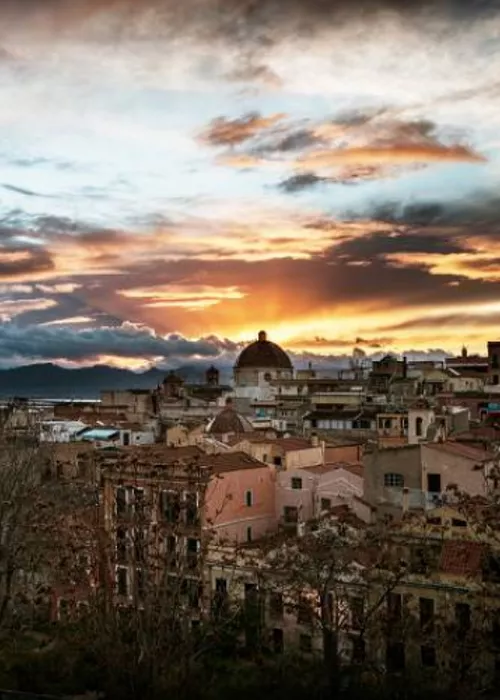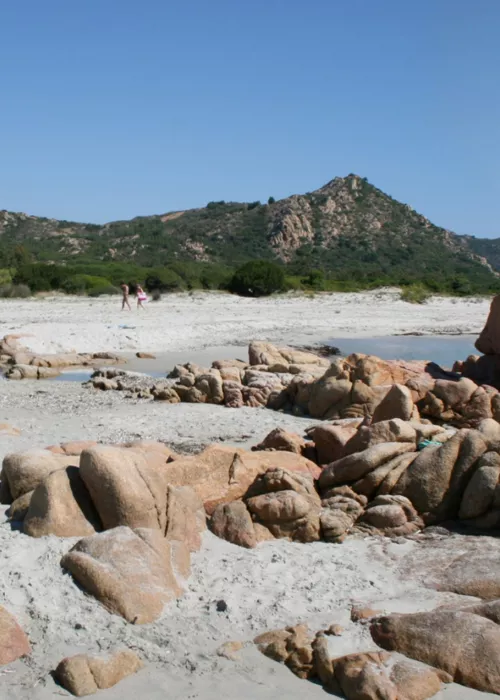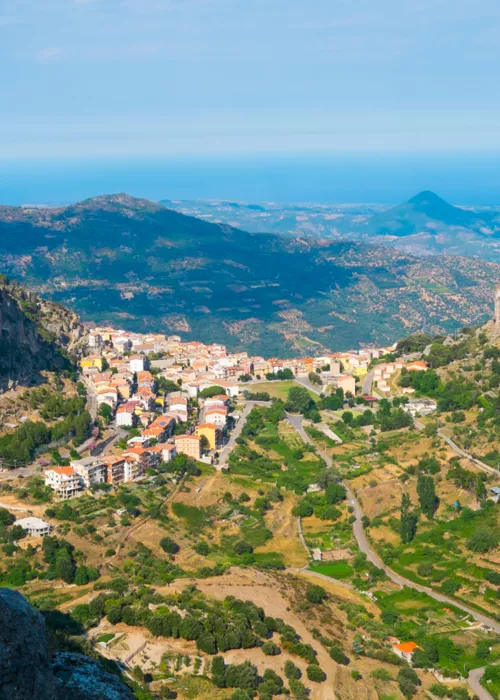Porto Rotondo

It was 1965 and Porto Rotondo - the name comes from the round bay which it overlooks - was an almost deserted village, with just a few houses surrounded by rugged and wild nature. Then Counts Niccolò and Luigino Donà delle Rose had their intuition. Together with friends, architects and well-known sculptors, they began planning the extension of the village to make it a tourist destination for high society. And the idea worked. Aristocrats, famous film and entertainment personalities, industrialists, intellectuals, artists and writers began to arrive. The urban layout is a clear and nostalgic reference to Venice, the Counts' city of origin. It is no coincidence that the square around which the buildings are positioned is called San Marco. With its luxury hotels and sumptuous residences, Porto Rotondo still attracts the international jet set, together with 'normal' tourists looking for relaxation on the magnificent beaches of the Costa Smeralda.
Rena Bianca Beach
Exit Porto Rotondo along Via Monte Ladu, follow Provincial Road 99, then turn onto 73. After passing the Gulf of Cugnana, the gateway to the Costa Smeralda consortium, and then the small, picturesque marina in Portisco, continue on Provincial road 94. After a while, the entrance to the beach is marked by a brown sign. The name, Rena Bianca, refers to the colour of the sand, which is very white, fine and soft, with some pink glints due to small grains of quartzite. Sinking your feet into it gives a feeling of pleasure, which turns to awe as you look at the turquoise and emerald green sea, the reddish granite cliffs and the crown of green, fragrant vegetation framing the beach. The panorama includes the islands of Soffi and Mortorio to the left. The beach is free, but you can rent umbrellas and sunbeds, and various equipment, such as canoes, jet skis or pedal boats, for exploring the coast. There is also a windsurfing school. In high season it is usually very busy, so those wishing to escape the crowds can take one of the paths from the car park on the left-hand side of the beach and cross the northern headland to a small, wild, sandy arch, called "Lu Stagnu Longu", due to the small pond behind it.
Cala Razza di Giunco

From Rena Bianca beach, continue along Provincial road 94 towards north and in a few minutes you come to Razza di Giunco, which is clearly marked by a brown sign. The cove gets its name from the reeds that grow nearby, in the marshy areas before you reach the beaches on this part of the coast.
Razza di Giunco, or Junco, includes three strips of white and golden sand, fine or composed of pebbles, flanked by scenic pink granite rocks and shrubs that at times almost reach the shore. The sea changes from cobalt blue to emerald shades and the seabed is shallow and richly populated, making the sandy beaches are ideal for snorkelling. Behind you there is green vegetation and in front, a skyline with majestic and more modest boats anchored offshore.
But you can see as far as the islet of Portisco, Porto Rotondo and Punta della Volpe. The cove offers various services, including rental of bathing and sports equipment, a kiosk and parking. It is also dog-friendly.
Cala Petra Ruja

Taking the SP 94 and coming off at the 160, you come to Cala Petra Ruja and Liscia Ruja. They are the most popular beaches on the Costa Smeralda, which combine a glamorous appearance, thanks to high-level restaurants and beach clubs, with unspoilt nature.
Cala Petra Ruja (Red Stone Cove) is truly wild, bordered by two headlands, protected by a scrub of junipers, helichrysums, sea rushes, rakes and sea lilies, and dotted with reddish rocks and granite pebbles. The water, from sky blue to turquoise, to green, bathes soft white sand. Liscia Ruja is the largest emerald beach: 500 metres of white beach with glints of gold and pink (depending on the play of the light) and a crystal-clear, bright turquoise sea.
Both are facing the small islands of Soffi and Mortorio, offering an enviable panorama. The coastline of Capriccioli, the next stop on the itinerary, is also visible from Liscia Ruja.
Cala Capriccioli

Just beyond the two jet-set beaches is the edge of the enchanting Capriccioli, a Gallurese term meaning little goats that refers to a pair of granite boulders shaped by the wind and sea. These separate two bays composed of small beaches of fine, soft, clear sand with silvery hues.
The sea is that of the splendid Costa Smeralda, with shades ranging from sky blue to turquoise and green, interrupted every now and then by pink rocks jutting out of the water. The green surroundings feature junipers, mastic trees and maritime pines. The eastern coast, La Celvia, has shallow sandy seabeds, and is therefore ideal for children's play.
Pink granite blocks separate it from the other sandy shore formed by the Pirate beach, which has a small wooden jetty for dinghies, canoes and pedal boats to rent and from the Turtle beach, a little further on.This is protected by dunes and junipers, and is a natural oasis where sea turtles come to lay their eggs. Both bays are sheltered from the Mistral.
Poltu di li Cogghj or Prince's Beach

Poltu di li Cogghj, chosen by Aga Khan, the Ishmaelite prince without whom the Costa Smeralda, one of the most renowned international elite tourism destinations, would not exist, has become the Beach of the Prince. Set in a deep inlet, it is a perfect arc of white sand, separated into two sections by a promontory of rock and juniper trees, which seems almost like a tropical atoll.
It is exclusive, due to its stunning scenery, but access is free. The spectacle already starts to appear along the winding path leading to it. The visual impact is more unique than rare, with the contrast between the green scrub, the white sandy shore and the blue and green variations of the sea. The land behind the beach was the first to be sold to the consortium, chosen by the Aga Khan as the site of his villa, which was never built.
The Great Pevero

Formerly known as 'rena manna', or 'big beach', Grande Pevero owes its name to the homonymous gulf. A crescent of very white, almost impalpable sand, about 300 metres long, bordered by granite rocks and scrub and bathed by a very clear, green and blue sea, which becomes transparent on the shore. The seabed is shallow and gently sloping, making the beach ideal for children. Behind it is a manicured golf course. Close by is its smaller sister, Piccolo Pevero, from where you can see the islets of Li Nibani (the seagulls) and the seabirds that inhabit them.
Porto Cervo, Queen of the Costa Smeralda

Lying in a cove sheltered from the wind, Porto Cervo is the nerve centre of the Costa Smeralda. If for many it is synonymous with an exclusive lifestyle, for sports lovers it is a prime location for international yachting, famous for launching the first Italian challenge to the America's Cup in 1983 with the legendary Azzurra.
The landing place is located at the end of a natural harbour branching off into various inlets, from which it gets its name Cervo [deer]. The iconic square and streets feature elegant and expensive boutiques, bars and clubs that are always partying. Even the original Stella Maris Church, sinuous and white, with a portico supported by granite blocks, a conical bell tower and a small funnel-shaped dome clad in turquoise majolica, has benefited from the wealthy Emeraldine patrons.
For example, the Mater Dolorosa painted by El Greco was donated to the church by Baroness Tissen-Bentinck. As for the sporting soul of place, the calendar of events runs from April to September, culminating towards the end of the season in the Maxi Yacht regattas, with the spectacle of dozens of boats competing against the backdrop of the islands of theMaddalena archipelago, in the Gulf of Arzachena or that of Cala di Volpe .
The Yacht Club is located at the end of the promenade of the new Porto Cervo Marina and overlooks Piazza Azzurra, another exclusive meeting and shopping place, which in weeks of sporting activity becomes the centre of the Regatta Village.


